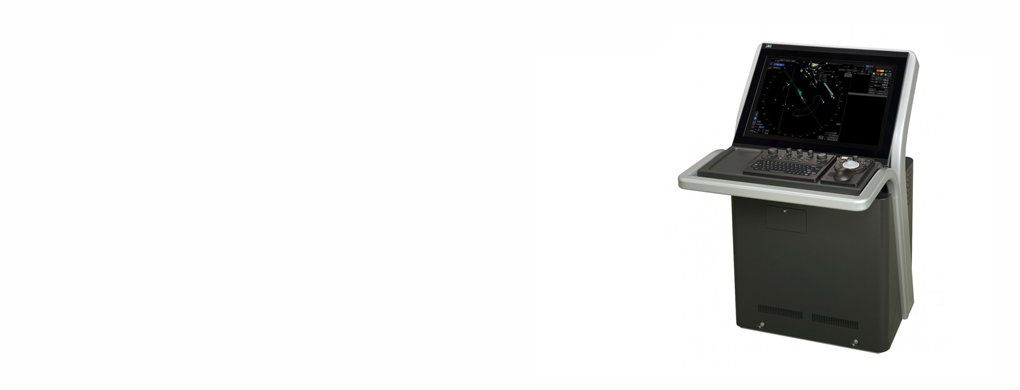Home > JRC 제품 > Navigation > Radar > JMR-9200/7200
Features
The JMR-9200/7200 series is a MED-certified marine radar incorporating a 26-inch-wide, 19-inch LCD and meeting the latest IMO performance standards. Incorporating a new Icon-based user interface to provide the latest functions in a user-friendly manner.
Sophisticated user interface
The JMR-9200/7200 series incorporates a new user interface (named jGUI) for an intuitive, easy-to-use, simple menu system based on the display of icons. This interface always displays critical data in fixed positions on the screen while icon-based menu display informs users of corresponding functions straightaway. Furthermore, target tracking (TT) and AIS symbols feature a pop-up displays while mouseover on the target showing their main data at a glance.
Safety Zone Viewer function [Update support available]*1
By displaying areas of high collision risk on the radar screen, navigators can intuitively grasp safe navigation areas. It is also effective in planning a course of avoidance in congested waters, as the safe course can be seen at a glance. Even if you are already using the JMR-9200/7200 series, you can install the Safety Zone Viewer by updating the software.*1: Option
Safety Zone Viewer example of screen display


Safety Zone Viewer screen comparison

Easy-to-use operating unit
The newly designed trackball supports all the operation of the equipment. Users will be alerted with alarms from the operating unit and color changes under situations that require attention. The radar incorporates dedicated function buttons and control knobs similar to those of conventional models. Furthermore, the radar will be operable like conventional models by connecting an optional operating unit that incorporates a full keyboard.

Solid-state scanner antenna
The JMR-9200/7200 series have been prepared X-band and solid-state scanners. Each model incorporates a built-in performance monitor and has MED certification. The new S-band radar is the world's first MED-certified compact and lightweight model with an 8-ft solid-state scanner antenna following JRC's model with a 12-ft solid-state S-band scanner antenna. JRC's 8-ft series models include its first solid-state scanner antenna that rotates at the rate of as high as 48 rpm. This model using a scanner antenna with a weight of 90 kg is suitable for high-speed craft that needs to grasp situation changes quickly. A solid-state scanner antenna has the following advantages.No preheating or tuning required
No preheating or tuning is required. A stable image will be obtained promptly after the power is turned on.A built-in Doppler filter clearly extracts target objects
Conventional magnetron radars have difficulty in using Doppler filters. A new digital signal processing method has made improvements in target detection performance in clutters.Magnetron replacement unnecessary
The product adopted a highly reliable solid-state transmission circuit, thus eliminating periodical magnetron replacement and leading to a maintenance cost reduction. 6-ft scanner
6-ft scanner
 9-ft scanner
9-ft scanner
 Example of 6-ft solid-state scanner screen display
Example of 6-ft solid-state scanner screen display
 S-band solid-state scanner
S-band solid-state scanner
JRC's new processor brings advanced usability
The JMR-9200/7200 series incorporates JRC's newly developed high-speed processor. The outstanding processing capability has achieved optimum signal processing according to the distance from the own ship. This has greatly improved the target detection performance of the radar in short-distant sea clutter (reflection from the waves). With the target tracking (TT) function of the radar operated in the background continuously, the movement vector of a target object and numerical information on the object can be displayed immediately after the user acquires the target. Furthermore, the JMR-9200 series with a 26-inch-wide screen makes it possible to use a second plan position indicator (PPI) in addition to the main PPI. While displaying two PPI's, it is possible to differentiate in range and off-center settings enabling the second PPI to expand a partial image around the own ship displayed in the main PPI and simultaneously monitor an area outside displayed on the main PPI.


Unique radar functions inherited
The JMR-9200/7200 series incorporates the unique features of JRC's radars that have been receiving a favorable reputation over the last decade.Unique radar functions inherited
The JMR-9200/7200 series incorporates the unique features of JRC's radars that have been receiving a favorable reputation over the last decade.
Constaview(Real-time head-up function)
The patented Constaview is realized through the use of two in-house built high-speed processors. All information gathered by the radar is fully processed within a few milliseconds before being displayed, generating a smooth image rotation. Even changing azimuth mode, the radar image is displayed without any delay caused by the scanner rotation.
